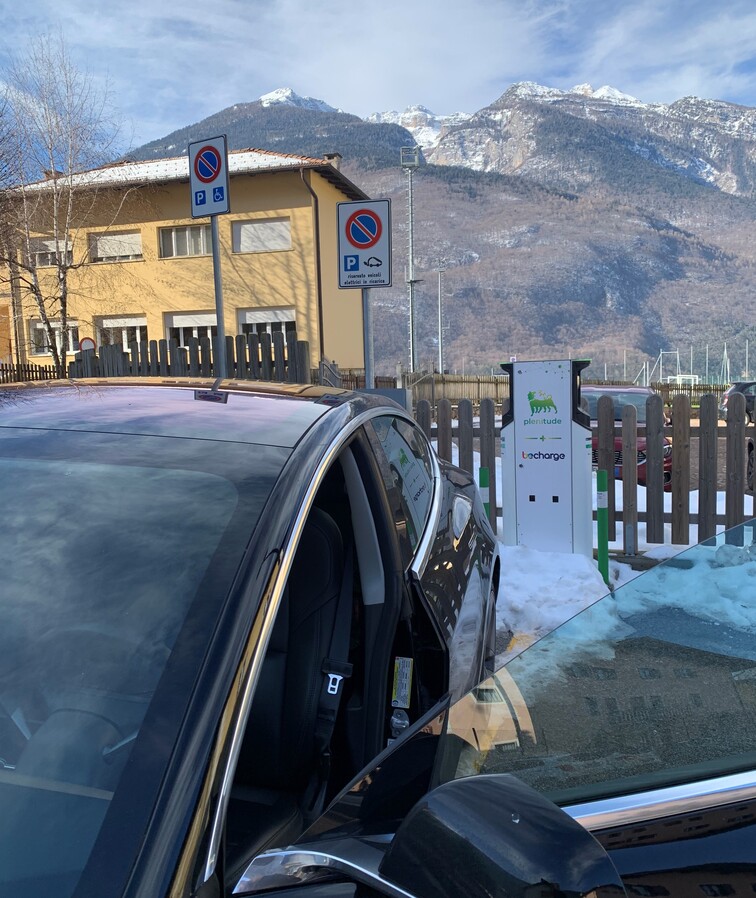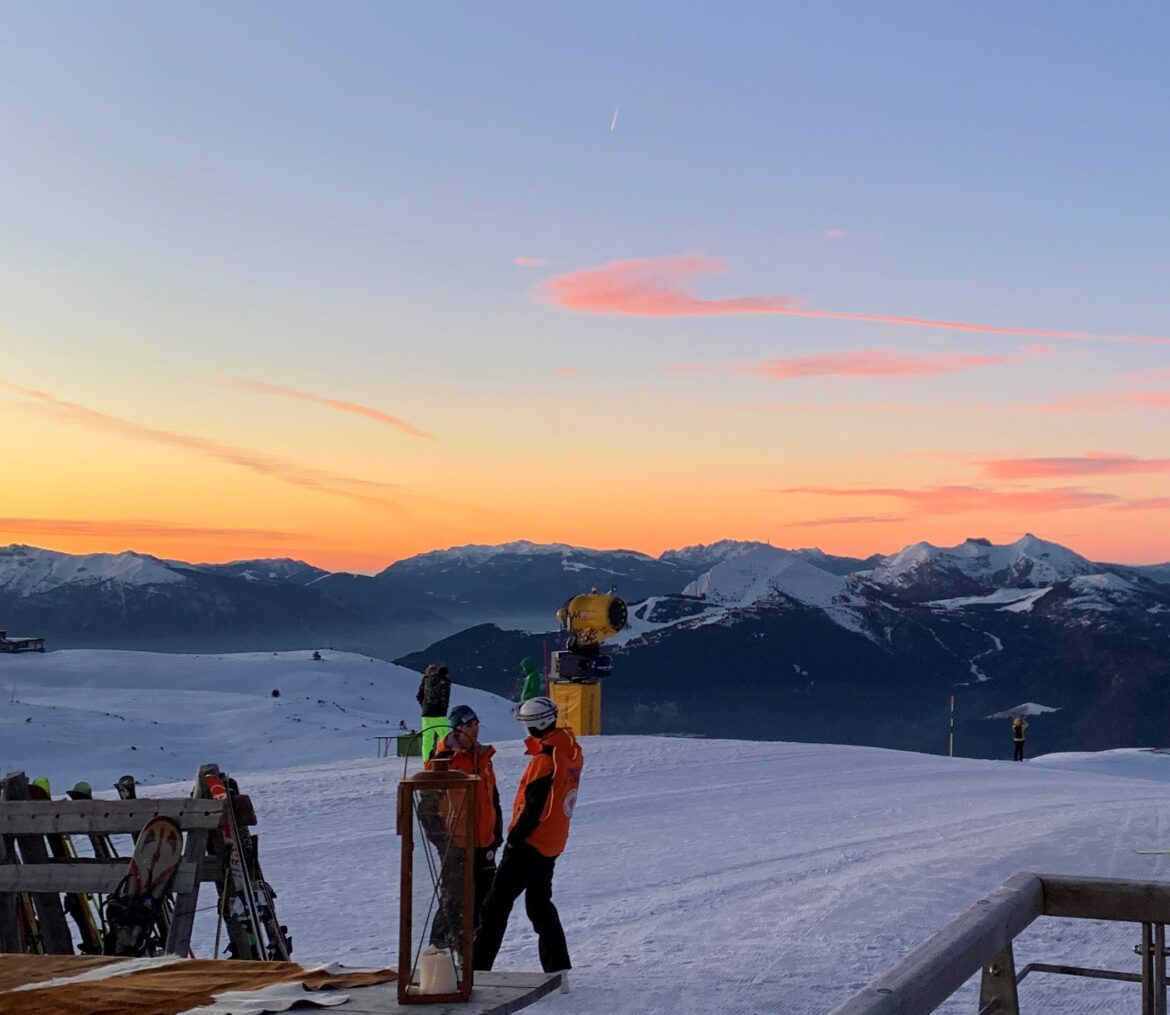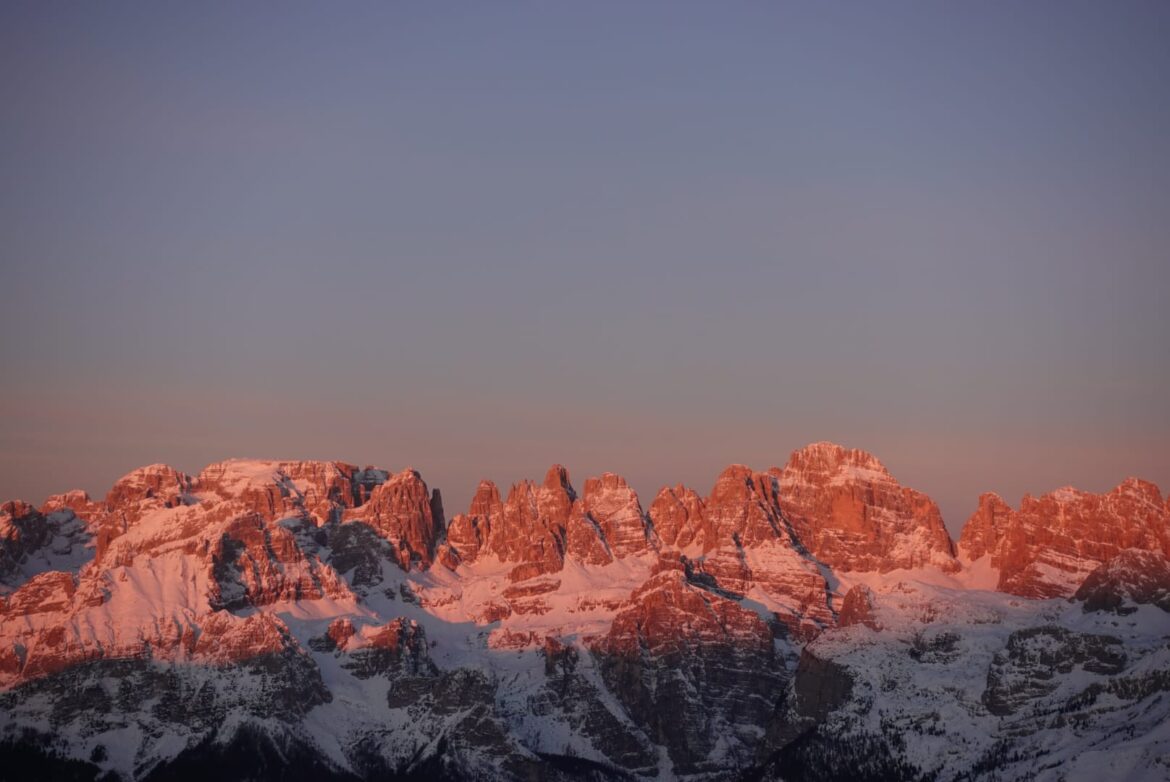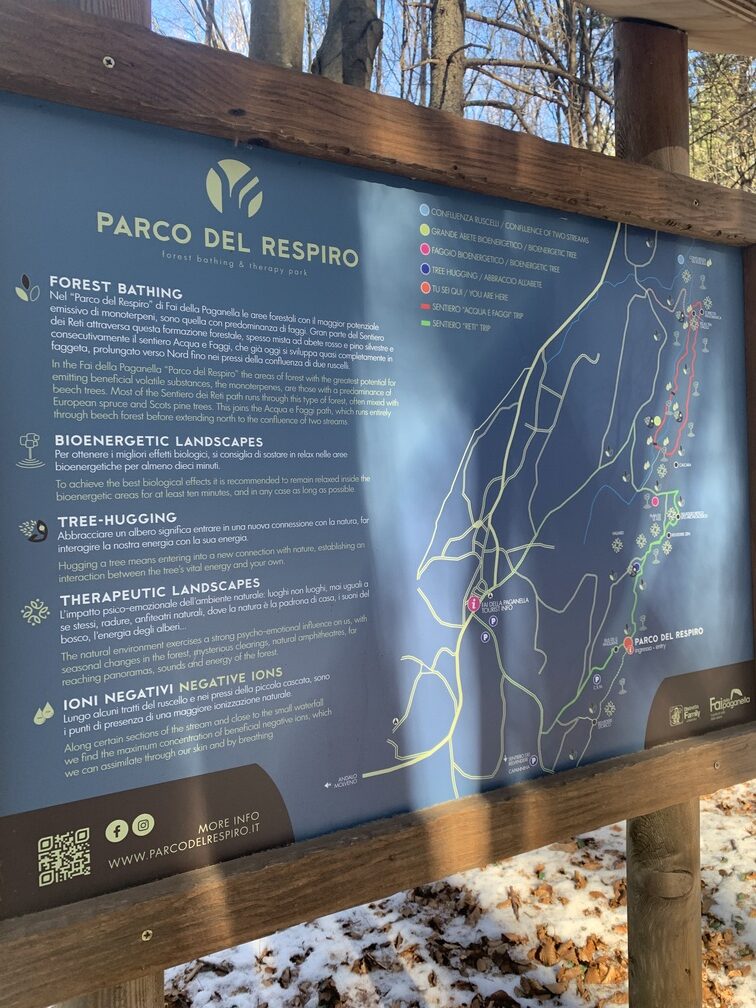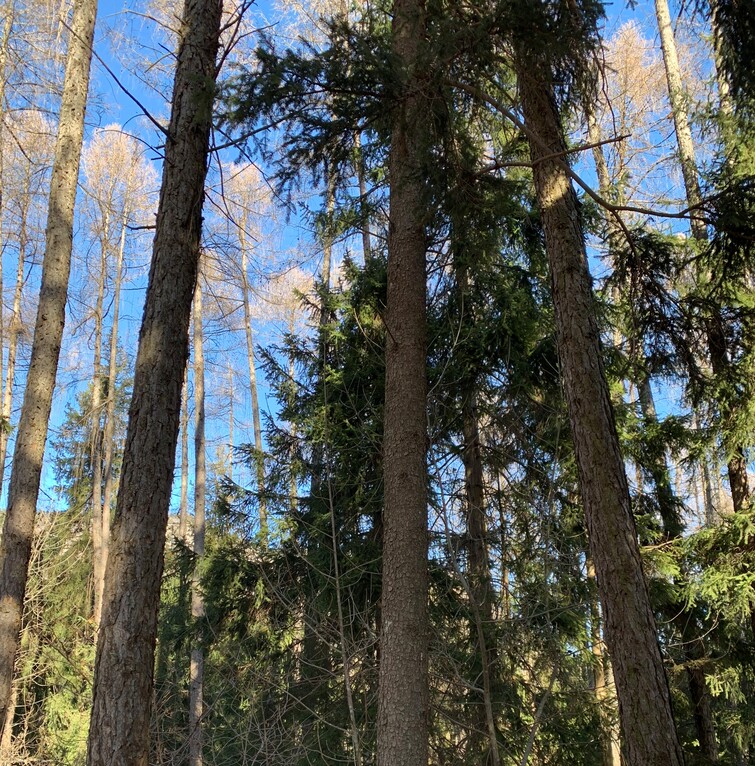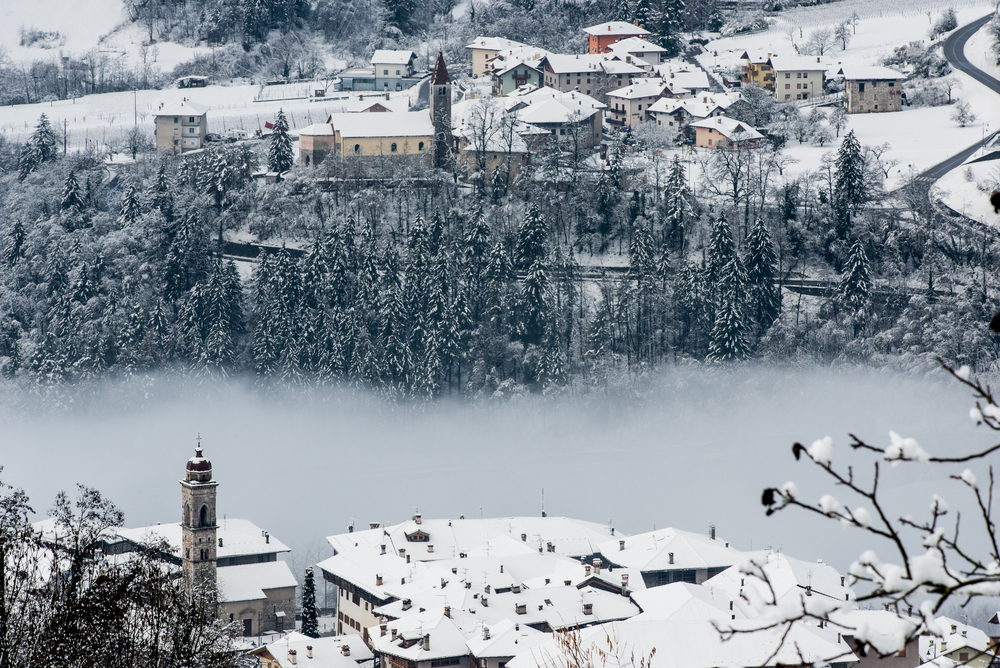The mountains offer many moments to charge up with good energy. After having told you about the beautiful lakes of this region, with this itinerary covered by the guys from Electric Trips we recommend a special route in a hidden corner of Trentino, where getting bored will be really difficult.
A weekend discovering the Paganella Plateau
Ready, set, go! Direction: the Paganella Plateau: an area full of experiences to be had. Thanks to its super favourable location, it can be easily reached by car. A destination connected to important cities in northern Italy; in fact, it is about 1 hour from Verona, just over 2 hours from Bologna or Padua, and 3 hours from Milan.
The future of electric is in the hands of the traveller! We will provide you with the most interesting ideas for an electric trip in the beauty of Trentino, amidst nature and the simplicity of mountain life.
The ubiquity of the Plenitude + Be Charge network allows you to have no worries. You can choose to recharge quickly, thanks to the San Michele all’Adige fast charging station in the Eni service station in Via Brennero 8.
From here you can already discover the wonders of the Piana Rotaliana among art and culture, following the route of the S.P. 64 or the S.S. 421. If you have the chance, don’t miss a visit to the METS, the Museum of Uses and Customs of the Trentino People!
Once you reach the bottom of the valley, taking the long tunnel that avoids passing through the centre of Mezzolombardo, you can continue towards the provincial capital, from the S.P. 235 until you reach the outskirts of Trento.
Nestled in the heart of the Alps, take advantage of the fast column at the Eni service station in Via del Brennero 154 on the S.S. 12, where during the recharge you can enjoy a stop at the bar and take advantage of the shop to purchase mobility products.
Finally, follow exit 6B, for the centre. The city was developed in Roman times and still retains many elements. Both columns have a maximum power of up to 110 kW.
A beautiful sunrise in Andalo
We’re taking you to Andalo, for an unusual morning appointment. It’s 5.30 a.m., and we’re ready to witness the dawn in Paganella. An unmissable event that will make you forget the early start.
Accompanying us in this adventure is Manuel, from Ambiez Mountain Guides, an expert Alpine guide from the area. It turns out that he has an electric car, too, and he shares our passion for silent mobility. We applaud how he’s brought his work in line with his life choices.
We’ll observe the sunrise from the summits of the Brenta Dolomites, enjoying breakfast at the La Roda chalet. We took the cable car, climbing to the summit 2,125m above sea level, while it was still dark! The air is pure, but freezing cold. You can still feel the dry and bitter cold on your face and on your hands, despite wearing gloves! Once you reach the top, it feels like you can touch the stars.
Breakfast was served in the warmth of the chalet. Time to taste the home-made delicacies together with a hot coffee, ready to witness a one-of-a-kind event. Slowly, the sun begins to break through the chalet’s misted windows.
This is a spectacle that only nature can offer us, something wonderful that is repeated every day at dawn and at dusk, ever since the limestone rocks that are the Dolomites, rose from the oceans. The sun’s rays start to kiss the magisterial peaks, which begin to blush pink.
The reflections of sunlight transform the rocky grey into a warm and natural fuchsia that would grace any woman’s dream palette. We go out onto the outside terrace to take in the spectacle. The display recharges the mind; to recharge the body, we sought out the legendary manager of La Roda, nicknamed Gigi, for scrambled eggs, omelette and pancetta, in the open air.
The Legend of King Laurin
For centuries, this magic has inspired many wonderful stories and legends. The most famous, without doubt, is the legend of King Laurin and his magnificent roses: ‘Many, many years ago in the Catinaccio mountain chain lived King Laurin, the cunning king of the dwarves, who spent his time digging deep down into the earth to find precious stones.
Among his various treasures, the king owned a magic belt, which allowed him to become invisible. One day, the King of Adige held a great feast and invited all the aristocrats in the area, except King Laurin. Nevertheless, the king of the dwarves went to the feast anyway, wearing his belt so that he wouldn’t be seen by anybody. Similde, the king’s beautiful daughter, was also at the feast.
Laurin fell in love with her at first sight and, exploiting the fact that he was invisible, he kidnapped her and took her to his kingdom on the Catinaccio mountain range. He cast a spell, covering the mountain with a magnificent layer of red roses (it’s no coincidence that, in German, the Catinaccio is called “Rosengarten” [Rose Garden]).
The King of Adige, however, did not sit idle and, together with his army, he marched towards King Laurin’s kingdom to free his daughter. The king of dwarves was convinced that no-one would track him down because, thanks to his belt, he could be invisible, but he hadn’t considered one thing: every time he moved on that garden of roses, he trampled some of them.
So, all the soldiers had to do was follow the path of the trampled roses to find him, catch him and tear the magic belt off him. The poor king of dwarves had no option but to surrender and give beautiful Similde back to her father. Before doing so though he put a terrible curse on the rose garden that had betrayed him.
He said, “No human eye will be able to admire you, neither during the day nor at night.” And so, where there were once beautiful roses, only bare rocks remained. But King Laurin hadn’t considered sunset, which was neither day nor night. That is why, even today, when the sun dips behind the mountains, we can still admire the garden of red roses that tinges the Dolomite peaks.
Towards the ‘Cesare Battisti’ Refuge
It’s time to move a little to warm up. We go snowshoeing on the snowy paths around the refuge. Manuel is always with us, ready to lead us on the path to the ‘Cesare Battisti’ refuge (no longer operational). Here we are, ready to set off after a briefing on how to wear snowshoes.
The snowpack has almost submerged the signposts and the snowshoes allow us to ‘float on the snow’. The sun begins to warm the air, the surrounding landscape is rich in mountain pine, the scents are indescribable. A beautiful experience in close contact with the mountains. The sky is clear and in the distance we glimpse the shimmer of Lake Garda.
A view of the Vallata appears before us about halfway up, along with the towers and spires of the Brenta Dolomites group, mighty rocky articulations with soaring shapes. A cable car once existed to connect Cima Paganella with the main town.
Spormaggiore: one of Paganella’s hidden gems
It’s time we moved about to get warm. We’re going to take a snowshoe hike on the snow-covered paths around the chalet. Manuel is with us again, ready to lead us on the path to the Cesare Battisti chalet (no longer in operation). We’re ready to leave after a short briefing on how to put our snowshoes on.
The snow layer has almost covered up the path signs and the snowshoes allow us to ‘float on the snow’. The sun begins to warm the air, the surrounding scenery is filled with mountain pines, the aromas are indescribable. An amazing experience in close contact with the mountain. The sky is clear and in the distance we get a shimmering glimpse of Lake Garda.
Around half-way, we’re presented with a view over the valley, and the ‘towers’ and peaks of the Brenta group of Dolomites, slender and powerful rocky structures. Once, there was a cable car that linked Cima Paganella to the area’s capital.
At the end of the route, Manuel delighted us with stories about the King of the Forest and symbol of the Adamello Brenta Natural Park: the brown bear. Fortunately for us, they’re dormant at this time of year; at least, we think so… (despite the claw marks we saw on a tree trunk!).
Time to head towards Spormaggiore, one of the 7 gems of the Paganella district, and to visit the Casa del Parco Naturale Adamello Brenta, dedicated to the brown bear. Follow the signs to the town’s central square, in Via dell’Asilo, and you’ll find the Plenitude + Be Charge charging point, that supports charging up to 22kW.
You can visit the museum, and if you’ve not finished charging, there’s also a wildlife area, where you can see real-life examples. There are more than eighty-five free-roaming bears in this part of Trentino.
If you come at the end of January, your car’s range will be reduced a bit because of the harsh temperatures. No problem. The area’s Plenitude + Be Charge charging points will make sure you’re more charged than ever. We continue our journey to nearby Fai della Paganella. You’ll also find a sustainable charging point here.
We leave our car charging at the point at no. 2 Via del Risorgimento (behind the Belvedere Hotel). Falling in with the slow rhythm of charging, we take the opportunity to experience the Parco del Respiro. We have an appointment with Stefano and Debora, who will help us indulge in a spot of forest bathing. It’s time to fill our Tesla, to reawaken our senses.
We stop our engines to be guided by the forest bathing experience. This phenomenon began in Japan, and is practised widely in some East Asian countries, where it plays an important role in preventive medicine. A number of scientific studies show that some of the volatile substances that make up the essential oils produced by different species of tree, when inhaled in sufficient doses and for an appropriate length of time, cause human bodies to undergo prolonged physiological changes, helping us to reduce stress, calm blood pressure, and increase our immune system defences.
After a short walk through a man-made trail, we enter the forest from the path just outside the town, where the crunch of the beech leaves and the softness of the larch needles lead us towards the scenic parts of the Adige valley. We start with a very slow walk among the pine trees, to clear the mind, concentrating on our breath and being in symbiosis with the environment around us.
In absolute silence, concentrating on the rustle of the leaves, the distant shuffle of a squirrel that is synonymous with a clean environment, the call of the green woodpecker, heralding the forthcoming spring; all at once the forest murmurs with the sounds of a thousand lives, and just one life.
Beech trees predominate in the Parco dei Respiro in Fai della Paganella, that contain a collection of monoterpenes, a volatile substance with anti-inflammatory properties and that provides numerous benefits to the nervous system.
On this walk, headed by the brilliant national trekking guide (one of his many qualifications), Stefano expertly described all the names of the surrounding mountains. The 360º view available at some of the mist-free scenic points, allowed us to see the distant peaks of the Alto Adige, right up to the Austrian border.
Recovering energy through plants
Appropriately, it’s our breath that allows us to make the most of this experience! Stefano taught us how plants can recharge our bioenergy nodes. By releasing carbon dioxide into nature, humans give positive ions to the trees, which, in turn, provide us with negative ions and oxygen: a very eco-friendly exchange. The perfect invisible link between humans and nature. So, we begin to learn to breathe, using tree trunks. We literally sniff the trunk which emits intense scents. Different species have different scents.
At one point, our guide asked us to choose a feather we liked, from a selection collected from the area. There are volatiles in this area, thanks to the warm thermals. We chose feathers from a peregrine falcon and from a European honey buzzard. We were to ‘charge’ these feathers with our negative thoughts, then we were to let them go in the park. We could then go home filled with only the positive energy provided by nature.
We came to the final moments of relaxation with Stefano, the brilliant agro-ecologist, and Debora, the fantastic naturopath and holistic practitioner from the Brentanima Association. So, we come to the end of the course, where we are faced with a giant hammock, where we could see the blue sky and the remains of large trees. We allow ourselves to be carried away a little more by a fantastical, yet real story about nature that Stefano calls simply ‘Gaia’, while Debora rubbed our hands and face with an ointment made of olive oil, beeswax, St. John’s wort and bergamot essential oil.
As we returned to the car, we saw paw prints made by wolves, hares and foxes in the snow. The stories and the passion for nature expressed by the people who work at the park, are full of emotion and enthusiasm. We’re as supercharged with energy as our car is. The mutual respect between humans and nature is the essence of the experience. Believe us when we say that the positive energy there is like a drug!
Taking Trento as a starting point, you can take a circular route by car to discover some of Trentino’s valleys. Follow state road S.S. 237 towards Sarche-Ponte Arche (Terme di Comano) and make a brief stop along the way at Castel Toblino, the most romantic of Trentino’s castles whose reflection appears in the lake of the same name.
Last stop: the beautiful village of San Lorenzo Dorsino
From there, just 20 minutes by car, drive up towards Molveno-Andalo. We’re going to find out about San Lorenzo Dorsino and the Outer Giudicarie districts. This is a real jewel that is a member of the Club dei Borghi Più Belli d’Italia, an Italian tourism association developed to promote traditional Italian towns and villages. It is made up of 9 small districts, each with a life of its own and a distinct architecture. There’s a fountain at the heart of each ‘villa’, where each one began life.
At this point, park your car in Piazza delle Sette Ville, and stretch your legs to discover the town’s history, visit the district churches and historic palazzos that are symbolic of the farming culture that characterised mountain life.
At the front of the main square, you can use the Plenitude + Be Charge to charge your car, thanks to a charging point installed on the local bank’s forecourt.
Not only culture… also excellent gastronomy!
The village is also famous for producing a salami to an old recipe monitored by the Italian Slow Food movement, and produced exclusively in San Lorenzo. During November, it holds a quality food festival that’s not to be missed. The salami is called ciuìga, or pigna in Trentino dialect. It’s made from pork, white turnip, spices and lots of tradition! So, because of the vegetable used, it’s made during the winter months.
In the district of Senaso, there’s a place that’s full of history and tradition, where an old district dairy has been used as a civic smoke-house since the 1970s. Even now, during production, each family that makes Ciuìga salami can finish their recipe by bringing their pork products to be smoked, lighting the fire and relishing the time!
Stefano, who has spent around 60 years of his life in the mountains of San Lorenzo, gave us a warm welcome within the walls of this rural treasure chest, telling us many stories about the town.
Is your mouth watering yet? There’s nothing left to do but plan a gastronomic break in this area. Our advice? Relax, download the Be Charge app, and with your electric car at full range, head north!
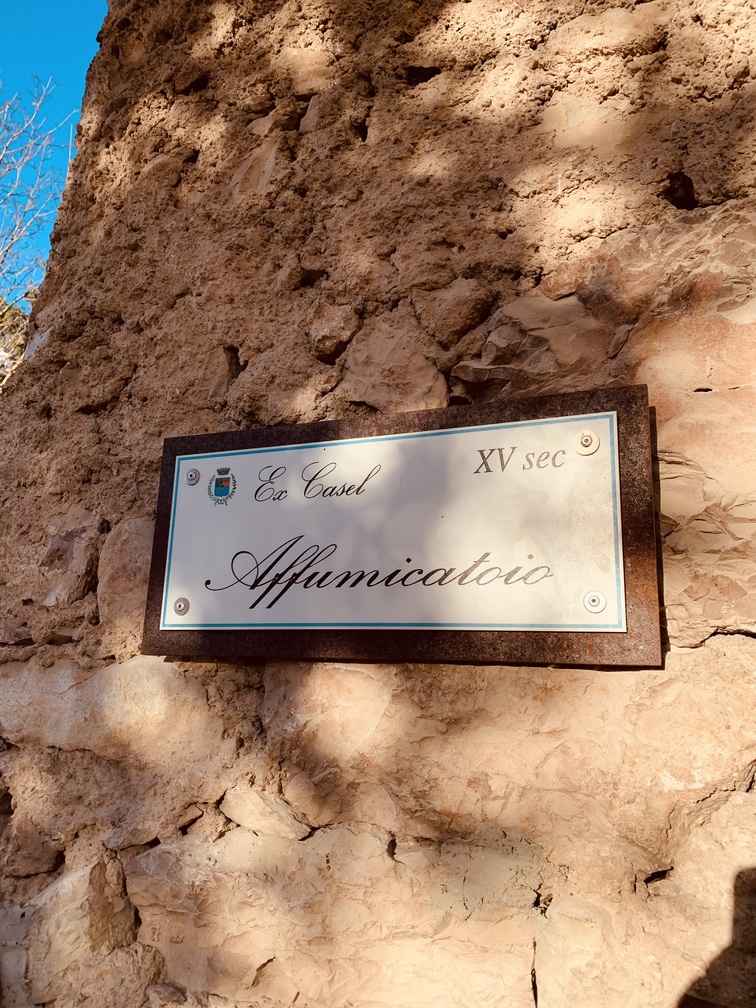
Article and photo material by Alexandra & Pasquale of Electric-Trips






